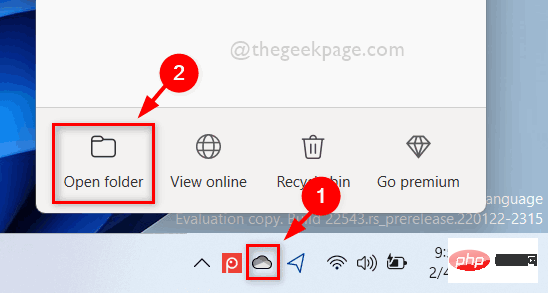
ThinkPHP6 multi-level cache configuration and use: improving caching effect
In recent years, with the rapid development of the Internet, users have higher and higher requirements for web page loading speed . In order to improve the loading speed of web pages, caching has become one of the indispensable technical means. In the ThinkPHP6 framework, multi-level cache configuration and use has become an important feature, which can help us better improve caching and web page loading effects.
1. Multi-level cache configuration
Multi-level cache uses different levels of caching methods to improve the caching effect. In ThinkPHP6, we can implement multi-level cache configuration by modifying the configuration file. First, we need to find the cache.php file in the config directory of the project. After opening it, we can see the following configuration items:
return [
// 默认缓存驱动
'default' => env('cache.driver', 'file'),
// 文件缓存配置
'file' => [
'driver' => 'file',
'path' => env('cache.path', runtime_path('cache')),
],
// Redis缓存配置
'redis' => [
'type' => 'redis',
'hostname' => env('cache.redis.hostname', '127.0.0.1'),
'password' => env('cache.redis.password', ''),
'port' => env('cache.redis.port', 6379),
'timeout' => env('cache.redis.timeout', 0),
'prefix' => env('cache.redis.prefix', ''),
'select' => env('cache.redis.select', 0),
'expire' => env('cache.redis.expire', 0),
'persistent'=> env('cache.redis.persistent', false),
'serialize' => env('cache.redis.serialize', true),
],
// 更多缓存配置...
];In the above configuration file, The default option specifies the default cache driver, which uses file cache by default. We can see that in the file and redis options, the file and Redis cache-related information are configured respectively. If we want to enable multi-level caching, we can add a cache driver configuration in the configuration file, for example:
// 多级缓存配置
'multilevel' => [
'driver' => 'multilevel',
'stores' => ['file', 'redis'],
],In the above configuration, we define a multilevel cache driver and specify The stores options are file and redis, indicating the use of files and Redis as two levels of multi-level cache. When we perform caching operations, we will first search from the file cache, and if not found, then search from the Redis cache.
2. Use of multi-level cache
In the process of using multi-level cache, we can use the cache operation method provided by the framework to achieve it. The following is an example of using multi-level cache:
use think
acadeCache;
// 设置缓存
Cache::store('multilevel')->set('name', 'Tom', 3600);
// 获取缓存
$name = Cache::store('multilevel')->get('name');
// 删除缓存
Cache::store('multilevel')->delete('name'); In the above example, we obtain multilevel## through the store method in the Cache facade #Cache driver, and set the cache through the set method, get the cache through the get method, and delete the cache through the delete method. During the use of cache, the multi-level cache will search for data from the file cache and Redis cache in sequence. If the data is found in the file cache, it will be returned directly, thereby improving the cache effect.
Cache facade without the need for multiple level cache for special processing.
In actual project development, caching is one of the important means to improve web page loading speed and performance. By using the multi-level caching function of ThinkPHP6, we can effectively improve the caching effect and thereby optimize website performance. When configuring multi-level cache, we need to modify the
config/cache.php file and specify different cache drivers in the stores option to form a multi-level cache. In actual use, you can use the Cache facade to perform cache reading, writing, and deletion operations, thereby realizing the configuration and use of multi-level caches.
The above is the detailed content of ThinkPHP6 multi-level cache configuration and use: improve caching effect. For more information, please follow other related articles on the PHP Chinese website!
 如何在Go中使用命名管道?May 11, 2023 pm 04:22 PM
如何在Go中使用命名管道?May 11, 2023 pm 04:22 PM命名管道是一种在操作系统中相对比较低级的进程通信方式,它是一种以文件为中介的进程通信方式。在Go语言中,通过os包提供了对命名管道的支持。在本文中,我们将介绍如何在Go中使用命名管道来实现进程间通信。一、命名管道的概念命名管道是一种特殊的文件,可以被多个进程同时访问。在Linux系统中,命名管道是一种特殊的文件类型,它们存在于文件系统的某个位置上,并且可以在
 如何在Go中使用第三方库?May 11, 2023 pm 03:30 PM
如何在Go中使用第三方库?May 11, 2023 pm 03:30 PM在Go语言中,使用第三方库是非常方便的。许多优秀的第三方库和框架可以帮助我们快速地开发应用程序,同时也减少了我们自己编写代码的工作量。但是如何正确地使用第三方库,确保其稳定性和可靠性,是我们必须了解的一个问题。本文将从以下几个方面介绍如何使用第三方库,并结合具体例子进行讲解。一、第三方库的获取Go语言中获取第三方库有以下两种方式:1.使用goget命令首先
 如何在PHP中使用协程?May 12, 2023 am 08:10 AM
如何在PHP中使用协程?May 12, 2023 am 08:10 AM随着传统的多线程模型在高并发场景下的性能瓶颈,协程成为了PHP编程领域的热门话题。协程是一种轻量级的线程,能够在单线程中实现多任务的并发执行。在PHP的语言生态中,协程得到了广泛的应用,比如Swoole、Workerman等框架就提供了对协程的支持。那么,如何在PHP中使用协程呢?本文将介绍一些基本的使用方法以及常见的注意事项,帮助读者了解协程的运作原理,以
 如何在PHP中使用变量函数May 18, 2023 pm 03:52 PM
如何在PHP中使用变量函数May 18, 2023 pm 03:52 PM变量函数是指可以使用变量来调用函数的一种特殊语法。在PHP中,变量函数是非常有用的,因为它可以让我们更加灵活地使用函数。在本文中,我们将介绍如何在PHP中使用变量函数。定义变量函数在PHP中,变量函数的定义方式非常简单,只需要将要调用的函数名赋值给一个变量即可。例如,下面的代码定义了一个变量函数:$func='var_dump';这里将var_dump函
 如何在Go中使用WebSocket?May 11, 2023 pm 04:17 PM
如何在Go中使用WebSocket?May 11, 2023 pm 04:17 PM近年来,WebSocket技术已经成为了Web开发中不可或缺的一部分。WebSocket是一种在单个TCP连接上进行全双工通信的协议,它使得客户端和服务器之间的通信更加流畅和高效。如今,很多现代的Web应用程序都使用了WebSocket技术,例如实时聊天、在线游戏以及实时数据可视化等。Go语言作为一个现代的编程语言,自然也提供了很好的支持WebSock
 如何在 Windows 11 中按需使用 OneDrive 的文件Apr 14, 2023 pm 12:34 PM
如何在 Windows 11 中按需使用 OneDrive 的文件Apr 14, 2023 pm 12:34 PM<p>Windows 系统上的 OneDrive 应用程序允许您将文件存储在高达 5 GB 的云上。OneDrive 应用程序中还有另一个功能,它允许用户选择一个选项,是将文件保留在系统空间上还是在线提供,而不占用您的系统存储空间。此功能称为按需文件。在这篇文章中,我们进一步探索了此功能,并解释了有关如何在 Windows 11 电脑上的 OneDrive 中按需使用文件的各种选项。</p><h2>如何使用 On
 如何在Go中使用音频处理?May 11, 2023 pm 04:37 PM
如何在Go中使用音频处理?May 11, 2023 pm 04:37 PM随着音频处理在各种应用场景中的普及,越来越多的程序员开始使用Go编写音频处理程序。Go语言作为一种现代化的编程语言,具有优秀的并发性和高效率的特点,使用它进行音频处理十分方便。本文将介绍如何在Go中使用音频处理技术,包括读取、写入、处理和分析音频数据等方面的内容。一、读取音频数据在Go中读取音频数据有多种方式。其中比较常用的是使用第三方库进行读取,比如go-
 如何在PHP中使用数据聚合函数May 18, 2023 pm 02:51 PM
如何在PHP中使用数据聚合函数May 18, 2023 pm 02:51 PM数据聚合函数是一种用于处理数据库表中多行数据的函数。在PHP中使用数据聚合函数可以使得我们方便地进行数据分析和处理,例如求和、平均数、最大值、最小值等。下面将介绍如何在PHP中使用数据聚合函数。一、介绍常用的数据聚合函数COUNT():计算某一列的行数。SUM():计算某一列的总和。AVG():计算某一列的平均值。MAX():取出某一列的最大值。MIN():


Hot AI Tools

Undresser.AI Undress
AI-powered app for creating realistic nude photos

AI Clothes Remover
Online AI tool for removing clothes from photos.

Undress AI Tool
Undress images for free

Clothoff.io
AI clothes remover

AI Hentai Generator
Generate AI Hentai for free.

Hot Article

Hot Tools

PhpStorm Mac version
The latest (2018.2.1) professional PHP integrated development tool

Safe Exam Browser
Safe Exam Browser is a secure browser environment for taking online exams securely. This software turns any computer into a secure workstation. It controls access to any utility and prevents students from using unauthorized resources.

SublimeText3 English version
Recommended: Win version, supports code prompts!

Dreamweaver CS6
Visual web development tools

SublimeText3 Mac version
God-level code editing software (SublimeText3)






